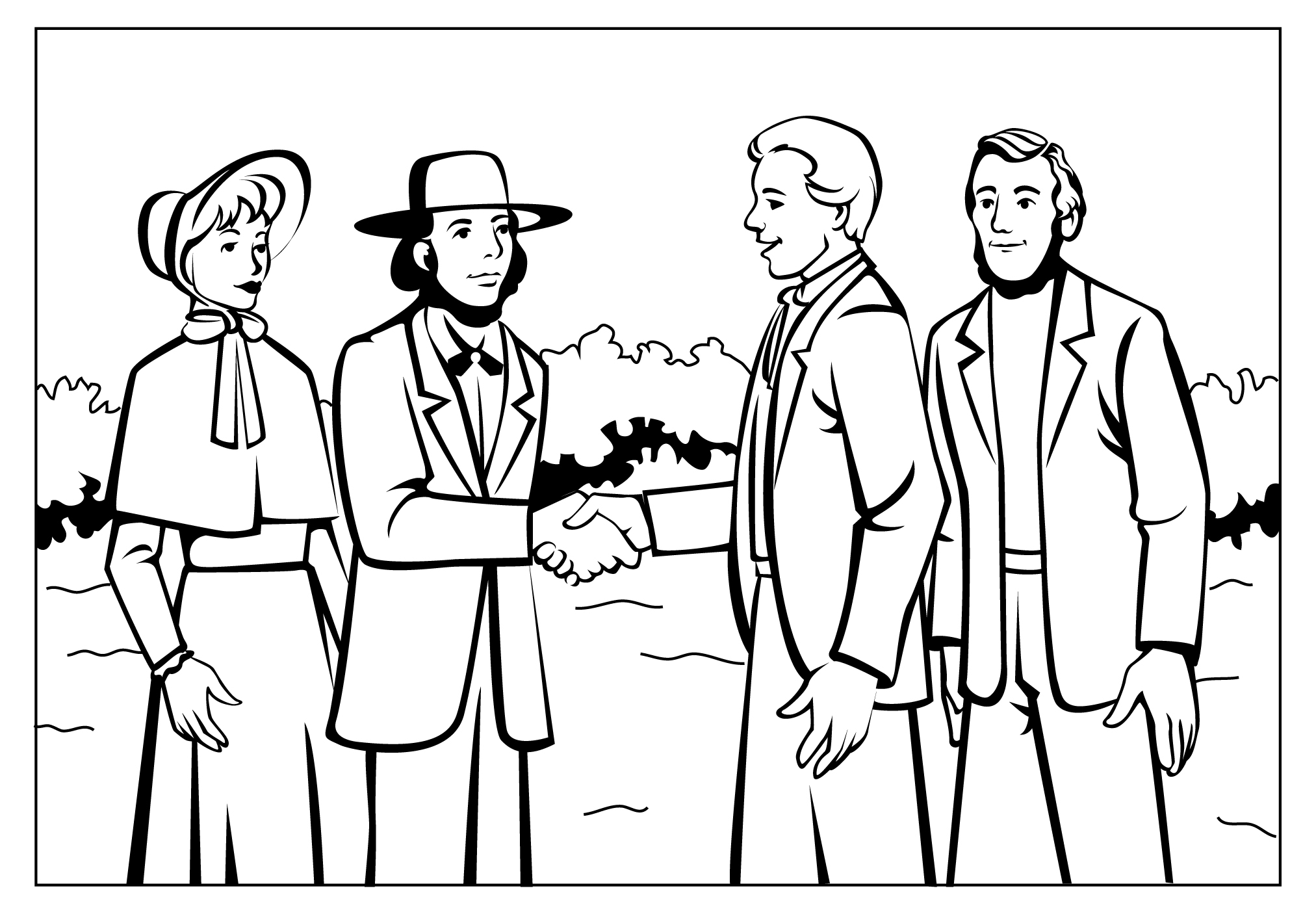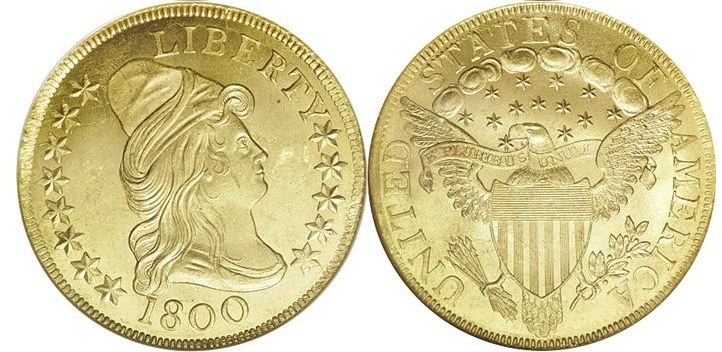
A Promise from Joseph Smith

Soon
after Russell King Homer received The Book of Mormon, he was very
anxious to visit the headquarters of the Mormon Church, which at
that time was in Kirtland, Ohio. He began trying to persuade his
wife, her sister, and her sister’s husband to go with him to
Kirtland. He said they were not
much interested in this new religion, but reluctantly consented to go with him.
When they arrived in Kirtland, church was in session and the Prophet Joseph Smith was speaking. He mentioned the poverty of the Church, and said that some funds were needed immediately.
 After the session, he came down through the congregation
shaking hands. As he came near to Russell, Martin Harris stepped
forward to introduce them. As Russell shook his hand, he left a
$10 gold piece* in Joseph’s hand. The prophet looked at the money
and said, “Mr. Homer, money was never needed worse or put to a
better use than this will be. This is indeed ‘bread cast upon the
waters’ and will be returned to you and yours. Neither you nor
your family shall ever want for bread.”
After the session, he came down through the congregation
shaking hands. As he came near to Russell, Martin Harris stepped
forward to introduce them. As Russell shook his hand, he left a
$10 gold piece* in Joseph’s hand. The prophet looked at the money
and said, “Mr. Homer, money was never needed worse or put to a
better use than this will be. This is indeed ‘bread cast upon the
waters’ and will be returned to you and yours. Neither you nor
your family shall ever want for bread.”
Russell was so impressed with what he heard that he would not leave the room to get lunch for fear he might not get back in time for the next session. He drank in every word and wished to get baptized before he left Kirtland, but his wife, Eliza, was a devout member of the Dutch Church and was very satisfied with her religion. He wanted to join the Church at the same time as his wife, Eliza, so he returned home without being baptized. (from Homer Family History by Rachel Maretta Crocket)
* Coins of denominations as high as $10 were typically used for bank transfers rather than as pocket change or spending money. As an example, in 1818 a farm laborer earned an average of $9.45 per month in the United States. An artisan working in Philadelphia earned an average of $11.16 for a six-day work week, while a laborer in the same city earned $6 for the same six-day work week.
** The gold coin was designed by Chief Engraver Robert Scot who replaced the small eagle reverse in mid-1797 with the new Heraldic Eagle design, modeled after the bird on the Great Seal of the United States. The Capped Bust motif remained on the obverse until 1804, when President Jefferson halted production of both gold eagles and silver dollars. The eagle would not return until 1838, when it featured an entirely new design.
much interested in this new religion, but reluctantly consented to go with him.
When they arrived in Kirtland, church was in session and the Prophet Joseph Smith was speaking. He mentioned the poverty of the Church, and said that some funds were needed immediately.
 After the session, he came down through the congregation
shaking hands. As he came near to Russell, Martin Harris stepped
forward to introduce them. As Russell shook his hand, he left a
$10 gold piece* in Joseph’s hand. The prophet looked at the money
and said, “Mr. Homer, money was never needed worse or put to a
better use than this will be. This is indeed ‘bread cast upon the
waters’ and will be returned to you and yours. Neither you nor
your family shall ever want for bread.”
After the session, he came down through the congregation
shaking hands. As he came near to Russell, Martin Harris stepped
forward to introduce them. As Russell shook his hand, he left a
$10 gold piece* in Joseph’s hand. The prophet looked at the money
and said, “Mr. Homer, money was never needed worse or put to a
better use than this will be. This is indeed ‘bread cast upon the
waters’ and will be returned to you and yours. Neither you nor
your family shall ever want for bread.”Russell was so impressed with what he heard that he would not leave the room to get lunch for fear he might not get back in time for the next session. He drank in every word and wished to get baptized before he left Kirtland, but his wife, Eliza, was a devout member of the Dutch Church and was very satisfied with her religion. He wanted to join the Church at the same time as his wife, Eliza, so he returned home without being baptized. (from Homer Family History by Rachel Maretta Crocket)
* Coins of denominations as high as $10 were typically used for bank transfers rather than as pocket change or spending money. As an example, in 1818 a farm laborer earned an average of $9.45 per month in the United States. An artisan working in Philadelphia earned an average of $11.16 for a six-day work week, while a laborer in the same city earned $6 for the same six-day work week.
** The gold coin was designed by Chief Engraver Robert Scot who replaced the small eagle reverse in mid-1797 with the new Heraldic Eagle design, modeled after the bird on the Great Seal of the United States. The Capped Bust motif remained on the obverse until 1804, when President Jefferson halted production of both gold eagles and silver dollars. The eagle would not return until 1838, when it featured an entirely new design.